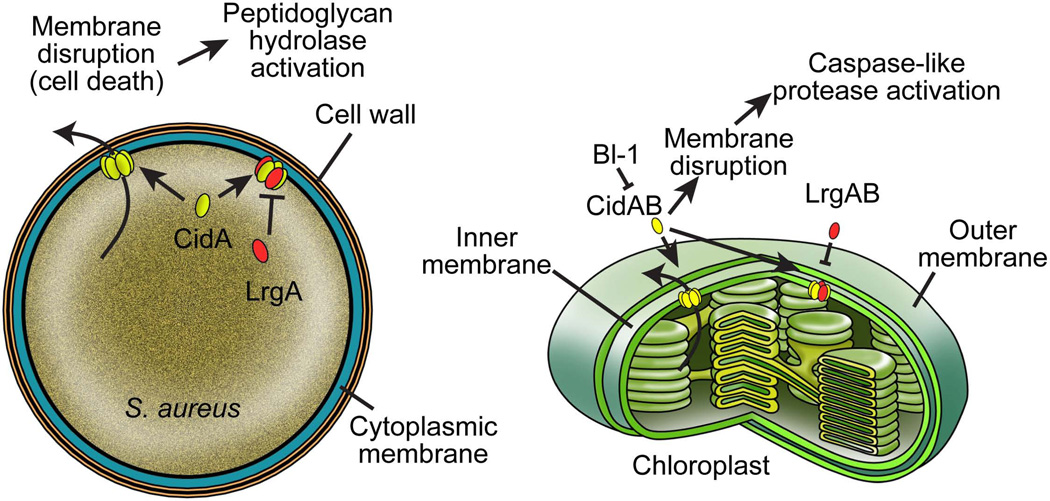Figure 2.
The molecular conservation of cell death mechanisms between chloroplasts and bacteria. Similar to previous hypotheses suggesting the relationship between bacterial and mitochondrial cell death pathways [9, 12, 14], it is envisioned that an important figure in plant cell death, the chloroplast, shares common cell death regulatory mechanisms with bacteria. Plant CidAB proteins are predicted to function as effectors of cell death and are counteracted by interactions with paralogous proteins similar to AtLrgB. As with the Bcl-2 family [60], plant CidAB and LrgAB proteins are hypothesized to function as holins and antiholins, respectively. Also, shown are the hypothetical interactions and inhibitory effects of plant BI-1-like proteins with CidAB. Finally, the ultimate consequences of Cid and Lrg function in both plants and bacteria are to activate cellular destruction, in bacteria by the stimulation of peptidoglycan hydrolases that cause lysis, and in plants by inducing protease activity analogous to the caspase cascade.

